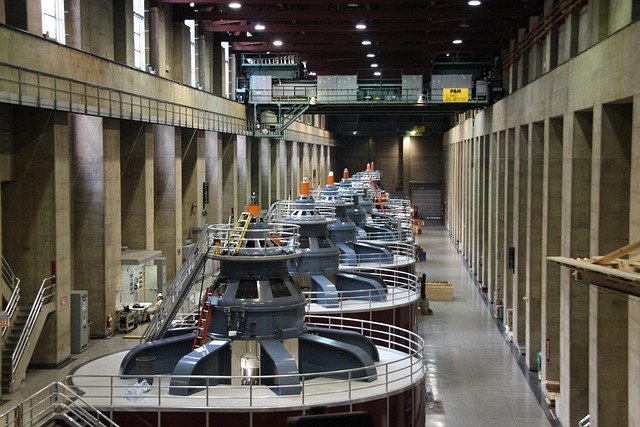Modular Process Skids: Revolutionizing Industrial Plant Design
The industrial landscape is undergoing a silent but profound transformation, reshaping how plants are designed, built, and operated. At the forefront of this change is the rise of modular process skids, a game-changing approach that's redefining efficiency and flexibility in industrial settings. This innovative concept is capturing the attention of plant managers, engineers, and executives across diverse sectors.

The Evolution of Plant Design
Traditional plant design has long been characterized by complex, time-consuming processes involving extensive on-site construction and integration. This approach often led to cost overruns, extended timelines, and operational inefficiencies. The concept of modularization in industrial settings isn’t entirely new, but recent advancements in engineering and manufacturing technologies have propelled modular process skids to the forefront of plant design innovation.
The roots of modular design can be traced back to the mid-20th century when the shipbuilding industry began adopting modular construction techniques. This approach gradually found its way into other industries, including oil and gas, where modular units were used for offshore platforms. However, it’s only in recent years that modular process skids have gained widespread recognition across various industrial sectors, from pharmaceuticals to food processing.
Advantages of Modular Process Skids
Modular process skids offer a multitude of benefits that are reshaping industrial plant design and operation. One of the most significant advantages is the dramatic reduction in on-site construction time. By manufacturing and assembling skids off-site in controlled environments, companies can slash project timelines by up to 50% compared to traditional methods. This not only accelerates time-to-market but also minimizes disruptions to existing operations during expansions or upgrades.
Quality control is another area where modular skids excel. Factory assembly allows for rigorous testing and optimization before deployment, ensuring higher reliability and performance once installed. This approach also enhances safety by reducing on-site construction activities and associated risks. Furthermore, the standardized nature of modular skids facilitates easier maintenance and future upgrades, contributing to longer operational lifespans and improved return on investment.
Flexibility and Scalability
In today’s fast-paced industrial landscape, the ability to adapt quickly to changing market demands is crucial. Modular process skids offer unparalleled flexibility, allowing plants to scale operations up or down with minimal disruption. This agility is particularly valuable in industries with fluctuating production needs or those exploring new product lines.
The modular approach also enables a “building block” strategy for plant expansion. Companies can add capacity incrementally by integrating new skids as needed, rather than committing to large-scale construction projects. This scalability not only reduces financial risks but also allows for more precise alignment of production capabilities with market demands.
Challenges and Considerations
While the benefits of modular process skids are clear, their implementation is not without challenges. One of the primary considerations is the initial design phase, which requires a more comprehensive approach to ensure seamless integration of skids into the overall plant architecture. This often necessitates close collaboration between skid manufacturers, plant engineers, and process specialists from the project’s outset.
Transportation and logistics can also pose challenges, particularly for larger skids or when dealing with remote locations. Careful planning and coordination are essential to ensure safe and efficient delivery and installation. Additionally, while modular skids offer significant cost savings over the long term, the upfront investment can be higher compared to traditional construction methods, requiring a shift in budgeting and financial planning approaches.
Future Trends and Innovations
The future of modular process skids looks promising, with ongoing innovations set to further enhance their capabilities and applications. Advancements in materials science are leading to lighter, more durable skids capable of withstanding harsh industrial environments. Meanwhile, the integration of smart sensors and IoT technologies is enabling real-time monitoring and predictive maintenance, further boosting operational efficiency.
Emerging trends also include the development of “plug-and-produce” skids with standardized interfaces, allowing for even faster integration and reconfiguration. This standardization is expected to drive greater adoption across industries, potentially leading to a more modular, flexible approach to industrial production as a whole.
Practical Insights for Implementing Modular Process Skids
• Conduct a thorough cost-benefit analysis comparing modular skids to traditional construction methods for your specific project.
• Engage skid manufacturers early in the design process to ensure optimal integration and customization.
• Consider future expansion plans when designing your initial modular layout to facilitate seamless scaling.
• Invest in training for your maintenance team to effectively manage and maintain modular systems.
• Explore leasing options for modular skids to enhance financial flexibility, especially for temporary or experimental production lines.
In conclusion, modular process skids represent a paradigm shift in industrial plant design, offering unprecedented flexibility, efficiency, and scalability. As industries continue to evolve and face new challenges, the adoption of modular solutions is likely to accelerate, reshaping the industrial landscape for years to come. By embracing this innovative approach, companies can position themselves at the forefront of industrial evolution, ready to meet the demands of an ever-changing market with agility and precision.





